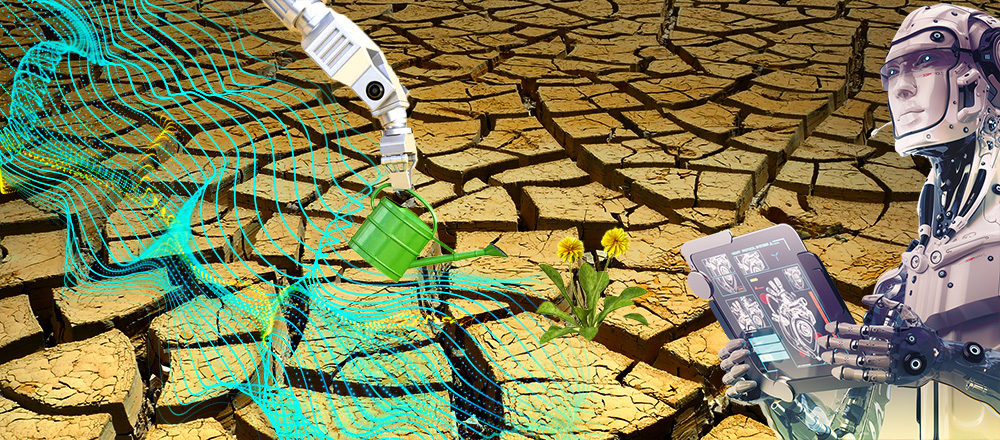Using AI to Building a More Resilient Economy Against Global Disruptions
The long-term effects caused by the pandemic are being felt by all industries. Broken supply chains, rising interest rates, energy crisis, food shortage, inflation, and many more. Many industries are still heavily impacted and experience major disruptions to work. However, the strength of the economy hinges tightly on our ability to continue doing work and being productive despite the circumstances.
Building a more resilient workforce
Many software and tech industries are able to set up virtual workforces remotely and remain productive during the pandemic. But for many, a significant part of day-to-day work is disrupted. Can artificial intelligence (AI) help to make the workforce more resilient in times of global disruption?
Once work is virtualized, it can be digitized, tracked, turned into data, and used to train an AI system to mimic how we work. This will start with the most repeatable tasks, but AI will eventually automate some creative activities also. But before this can happen, more of the physical work must be shifted into digital work so it can be easily tracked and turned into training data. How we work with AI subsequently will evolve in three phases.
1. Exchanging data for automation
AI-based technologies are becoming more pervasive in the workplace and will change the way of working in the future. First, digital records of our work will become training data for AI to learn and mimic our working patterns. Machine automation offers huge efficiency gains, so businesses must adopt it to compete more effectively. To enable employees to focus on not automatable activities, employees will share their data in exchange for machines to automate their repetitive tasks.
Although machines are fast and scalable, they must not degrade the quality of work. Otherwise, it may not be a worthwhile tradeoff for efficiency. Today, certain AI can outperform humans in specific tasks, but machines cannot replicate human quality just yet. However, as more data become available to train AI, its model will improve.
2. Teaching AI to refine its working model
When an AI is good enough to help the workforce, it can already be used to reduce human workload. However, a judgment must be made to see if it’s able to replicate the quality.
This will divide up the work so that AI and humans can each do what they do best. In cases where AI can replicate near-human quality work, AI can be leveraged to automate those tasks and offer efficiencies. Where AI fails to meet the acceptable quality, humans can take over those cases. Meanwhile, because all work is digitized, those challenging cases become new data from which AI learns and refines its model.
3. Full automation and job shift
As more data is collected on the challenging case where AI fails, AI may eventually learn to automate those cases as well as humans can. This is when our AI apprentice graduates and is ready to automate our work with minimal supervision.
The complete automation of our work by AI means that human’s roles will shift towards something more important and more strategic. It will also shift our work toward tasks that require more human empathy, reasoning, critical thinking, and planning (e.g. management and leadership).
Creating a resilient AI-augmented economy
With the help of remote conferencing technologies, meetings, and events can be held across the world. But there remains a challenge for the full digitization of work.
Many service industries have a well-known “last mile” delivery problem. Consumers can explore, research, configure, and purchase products or services online, but not all of them are downloadable with a click of a mouse. Many products and services still need to be delivered or performed in-person by humans.
To create a workforce that is resilient to global-scale disruptions, companies have two choices. They can shift more of their physical work to digital, which can eventually be automated by AI through the abovementioned three phases of work evolution. Or they can directly automate their physical work using advanced robotics powered by autonomous AI.
By allowing AI to augment the roles of humans, we can eliminate the need for physical interaction without halting a significant part of the economy. Because these robots can function autonomously, receive instructions remotely, or be controlled remotely, crucial societal functions can still be executed when human interaction is not advisable.
The future of the AI-augmented society
What would such an AI-augmented future look like? Wouldn’t a resilient AI-augmented workforce also render a large part of the human population redundant? The reality is some jobs will inevitably be replaced by AI in the immediate future. But this has happened with every technological innovation in human history. The effect is more dramatic with AI because this technology is very versatile and can be applied in many different industries and functions within a company.
However, it’s important not to use today’s standard to make a judgment about a future that may be wildly different. In this distant future, AI and robots could potentially automate many of the crucial operations that are necessary for a society to function without requiring humans to hold jobs. It can not only help us build a more resilient economy able to withstand global disruptions, but it may even eliminate our dependency on the traditional economy altogether.
DISCLAIMER: The content of this article was first published by FreshBusinessThinking.com. Here is the latest revision and a current rendition of the raw manuscript submitted to the publisher, which differs slightly from the previously published version.



